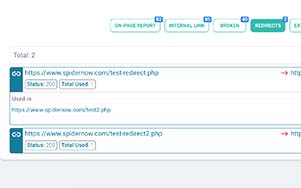What is minifying CSS and JS?
CSS and JS Minification: CSS and JS minification is the process of removing unnecessary characters, such as white spaces, comments, and line breaks, from Cascading Style Sheets (CSS) and JavaScript (JS) files. Minification reduces file size and improves loading times, resulting in faster website performance.
Benefits of Minifying CSS and JS
Minifying CSS and JS files offers several benefits for website owners and developers:
1. Improved page load speed: Minified files are smaller in size, allowing them to be downloaded and executed faster by web browsers.
2. Reduced bandwidth usage: Smaller file sizes result in lower bandwidth consumption, which is especially important for mobile users or websites with limited bandwidth.
3. Enhanced user experience: Faster page load times improve user satisfaction and reduce bounce rates.
4. Better search engine rankings: Google and other search engines prioritize fast-loading websites, so minifying CSS and JS files can contribute to better SEO performance.
5. Easier code maintenance: Minifying files can make the codebase more concise and easier to manage, especially for large projects with many CSS and JS files.
Improving Website Performance through Minification
Minifying CSS and JS files is an effective way to improve website performance.
By reducing the file size of these resources, the overall page weight is decreased, leading to faster loading times.
This is especially important for mobile users or visitors with slower internet connections.
In addition, minified files can be better compressed, resulting in smaller transfer sizes and reduced bandwidth usage.
By optimizing the performance of their websites through minification, website owners can enhance user satisfaction and increase conversion rates.
Impact on Website Speed
Minifying CSS and JS files has a significant impact on website speed.
By removing unnecessary characters and reducing file size, minification allows web browsers to download and parse the files more quickly.
This results in faster page load times, which is crucial for providing a positive user experience.
In addition, minified files can be cached more effectively, further improving subsequent page loads.
By prioritizing minification, website owners can ensure that their websites load quickly and efficiently for all users.
SEO Benefits of Minification
Minifying CSS and JS files can have SEO benefits for websites.
Search engines, such as Google, consider page load speed as one of the ranking factors.
By minifying CSS and JS files, website owners can improve the loading speed of their pages, which can lead to better search engine rankings.
Fast-loading websites also tend to have lower bounce rates and higher user engagement, which are additional factors that can positively impact SEO.
Therefore, implementing minification techniques can contribute to improved visibility and organic traffic for websites.
Best Practices for Minifying CSS and JS
To effectively minify CSS and JS files, it is important to follow best practices:
1. Use minification tools: There are various tools available that can automatically minify CSS and JS files, such as UglifyJS, CSSNano, and Terser.
2. Keep a backup of original files: Before minifying, make sure to keep a backup of the original CSS and JS files for future reference or modification.
3. Test functionality after minification: After minifying the files, thoroughly test the website's functionality to ensure that there are no issues or errors.
4. Regularly update minified files: Whenever changes are made to the CSS or JS codebase, remember to update and re-minify the files to reflect the latest changes.
5. Consider using a content delivery network (CDN): Utilizing a CDN can help improve the delivery speed of minified CSS and JS files by serving them from servers located closer to the user's location.
How does minifying CSS and JS impact website rankings and overall performance?
Improved User Experience: Faster-loading websites provide a better user experience, leading to higher user satisfaction, increased engagement, and potentially higher search engine rankings.
Mobile Optimization: With the growing number of users accessing websites on mobile devices, optimizing CSS and JS files for faster loading can improve mobile performance and usability, positively impacting SEO and user experience.
In summary, minifying CSS and JS files is a critical aspect of website optimization, leading to faster page load times, improved user experience, and potentially higher search engine rankings. By implementing minification techniques and using available tools, website owners and developers can optimize their websites for better performance and user satisfaction.










